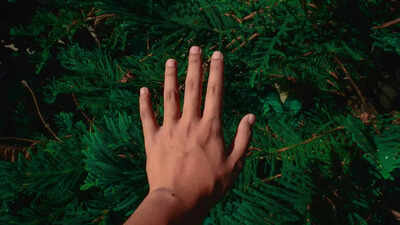Humans have alloys been curious about what our ancestors ate, and while many human animals thrive on a diet of grass, humans cannot. The primary reason lies in our digestive system’s inability to process cellulose, the main component of grass. Unlike Herbivores Such as Cows, which have specialized stomachs and gut bacteria to break down cellulose, Humans Lack the Necessary Enzymes and Digestiry Structures to ExTRECT NUTRACT NUTRACT NUTRACTS grass Effectively.A study published in the Proceedings of the National Academy of Sciences Explors the dietary habits of early human ancestors, indicating that while they have consume plant material, their digestive systems were not adapted to process large quantities of Cellulose-Cellulose-Cellulose-CHALULOSE. This research provides insight into the evolutionary dietary patterns of humans and highlights the differences between our digestive capabilities and those of Grass-Eating Animals.
The role of cellulose from the grass in human digestion

Cellulose is a complex carbohydrate found in the cell walls of plants, providing structural support. While Herbivores Possess Specialized Enzymes Like Cellulase to Break Down Cellulose Into Digestible Sugars, Humans Lack This Enzyme. As a result, when humans consume grass, the cellulose passes through the digestive system larger life
Differences in the Digestive Anatomy of Humans and Other Animals
The human digestive system is designed to process a varied diet, include fruits, vegetables, and animal products. Unlike ruminants, which have meti-chambed stomachs to ferrment and break down tough tough fibers, humans have a single-chambered stomach and a relatively short intestinal tract. This anatomical structure is not suited for the extensive fermentation required to digest cellulose-rain foods like grass.
Nutritional Limitations of Grass for Humans
Even if humans could break down cellulose, grass would still not be a viable food source. Grass is primarily composed of water and cellulose, with minimal amounts of proteins, fats, and other essential nutrients.Consuming Large Quantities of Grass Could Lead to Digestive Discomfort and Would not provide the necessary calories and Nutrients required for Human Health.
Evolutionary Perspective on Human Diet
The dietary habits of early humans and their ancestors have evolved over millions of years. While some hominids may have consumed plant material, their diets were diversie and inclined other sources of nutrition. The Lack of Adaptation to a grass-based diet is evident in our digestive system’s structure and enzyme composition, understand the evolutionary Divergence Between Humans and Herbivorous Animals.In summary, humans cannot digest grass due to the absence of the Necessary Enzymes and Digestive Structures to Process Cellulose. Even if we could break down cellulose, grass would fail to provide success nutrition.This biological limitation explains why humans relay on a varied diet of fruits, vegetables, grains, grains, and animal products. Undrstanding these constraints offers insight into our evolutionary history and highlights the importance of eating foods suited to our unique digestive system.Also read | Dinosaur with two heads? Rare Fossil Discovery Stuns Scientists



